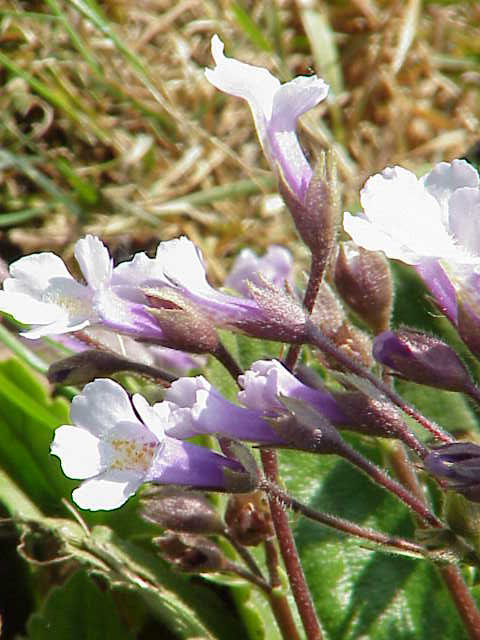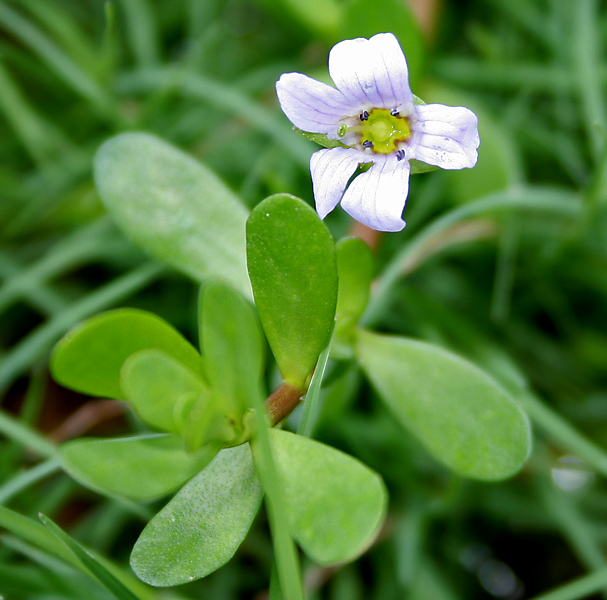|
Rehmannia
''Rehmannia'' is a genus of seven species of flowering plants in the order Lamiales and family Orobanchaceae, endemic to China. It has been placed as the only member of the monotypic tribe Rehmannieae, but molecular phylogenetic studies suggest that it forms a clade with '' Triaenophora''. Contrary to the immense majority of the taxa of Orobanchaceae, ''Rehmannia'' is not parasitic. Systematics Etymology ''Rehmannia'' is named for Joseph Rehmann (1788–1831), a physician in St. Petersburg.Gledhill, David (2008). "The Names of Plants". Cambridge University Press. (hardback), (paperback). pp 328 Homonymy The name "Rehmannia" has also been given to a genus of Jurassic ammonites of the family Reineckeidae. Classification The genus was included in the family Scrophulariaceae or Gesneriaceae in some older classifications. The current placement of the genus is in neither Scrophulariaceae s.s. nor Plantaginaceae s.l. (to which many other former Scrophulariaceae have been transferre ... [...More Info...] [...Related Items...] OR: [Wikipedia] [Google] [Baidu] |
Rehmannia Glutinosa
''Rehmannia glutinosa'' is one of the 50 fundamental herbs used in traditional Chinese medicine, where it has the name ''shēng dì huáng'' (). It is often sold as ''gān dì huáng'' (), ''gān'' meaning "dried". Chemical constituents A number of chemical constituents including iridoids, phenethyl alcohol, glycosides, cyclopentanoid monoterpenes, and norcarotenoids, have been reported from the fresh or processed roots of ''R. glutinosa''. Etymology * ''Rehmannia'' is named for Joseph Rehmann (1788–1831), a physician in St. Petersburg.Gledhill, David (2008). "The Names of Plants". Cambridge University Press. (hardback), (paperback). pp 180, 328Joseph Rehmann. ''Sammlung auserlesener Abhandlungen und merkwürdiger Nachrichten Russischer Ärzte und Naturforscher''. St. Petersburg 1812, p. 271-276: ''Ballota lanata. Ein neues Mittel gegen die Wassersucht.'' S. 271-27(Digitalisat)/ref> * ''Glutinosa'' means 'glutinous', 'sticky', or 'viscous'. See also *Chinese herbology ... [...More Info...] [...Related Items...] OR: [Wikipedia] [Google] [Baidu] |
Triaenophora
''Triaenophora'' is a genus of flowering plants native to Temperate Asia. Its family placement is not fully settled, : it may be placed in Orobanchaceae or Plantaginaceae. Taxonomy The genus ''Triaenophora'' was first erected by Hans Solereder in 1909, based on a section of the genus ''Rehmannia'' which Joseph Dalton Hooker had called "''Trianophora''" in 1891. It was initially placed in the family Scrophulariaceae. When that family was shown by molecular phylogenetic studies not to be monophyletic, and so was split up, ''Triaenophora'' was placed in Plantaginaceae, a placement still used by Plants of the World Online . Subsequent studies have shown that ''Triaenophora'' forms a clade with ''Rehmannia'', basal to parasitic genera in the family Orobanchaceae. While a 2009 study left ''Triaenophora'' unplaced as to family, a 2019 study placed it in a more broadly circumscribed In geometry, the circumscribed circle or circumcircle of a polygon is a circle that passes through ... [...More Info...] [...Related Items...] OR: [Wikipedia] [Google] [Baidu] |
Orobanchaceae
Orobanchaceae, the broomrapes, is a family of mostly parasitic plants of the order Lamiales, with about 90 genera and more than 2000 species. Many of these genera (e.g., '' Pedicularis'', '' Rhinanthus'', '' Striga'') were formerly included in the family Scrophulariaceae '' sensu lato''. With its new circumscription, Orobanchaceae forms a distinct, monophyletic family. From a phylogenetic perspective, it is defined as the largest crown clade containing ''Orobanche major'' and relatives, but neither '' Paulownia tomentosa'' nor '' Phryma leptostachya'' nor ''Mazus japonicus''. The Orobanchaceae are annual herbs or perennial herbs or shrubs, and most (all except '' Lindenbergia'', '' Rehmannia'' and '' Triaenophora'') are parasitic on the roots of other plants—either holoparasitic or hemiparasitic (fully or partly parasitic). The holoparasitic species lack chlorophyll and therefore cannot perform photosynthesis. Description Orobanchaceae is the largest of the 20–28 ... [...More Info...] [...Related Items...] OR: [Wikipedia] [Google] [Baidu] |
Gesneriaceae
Gesneriaceae, the gesneriad family, is a family of flowering plants consisting of about 152 genera and ca. 3,540 species in the tropics and subtropics of the Old World (almost all Didymocarpoideae) and the New World (most Gesnerioideae), with a very small number extending to temperate areas. Many species have colorful and showy flowers and are cultivated as ornamental plants. Etymology The family name is based on the genus '' Gesneria'', which honours Swiss naturalist and humanist Conrad Gessner. Description Most species are herbaceous perennials or subshrubs but a few are woody shrubs or small trees. The phyllotaxy is usually opposite and decussate, but leaves have a spiral or alternate arrangement in some groups. As with other members of the Lamiales the flowers have a (usually) zygomorphic corolla whose petals are fused into a tube and there is no one character that separates a gesneriad from any other member of Lamiales. Gesneriads differ from related families o ... [...More Info...] [...Related Items...] OR: [Wikipedia] [Google] [Baidu] |
APG IV System
The APG IV system of flowering plant classification is the fourth version of a modern, mostly molecular-based, system of plant taxonomy for flowering plants (angiosperms) being developed by the Angiosperm Phylogeny Group (APG). It was published in 2016, seven years after its predecessor the APG III system was published in 2009, and 18 years after the first APG system was published in 1998. In 2009, a linear arrangement of the system was published separately; the APG IV paper includes such an arrangement, cross-referenced to the 2009 one. Compared to the APG III system, the APG IV system recognizes five new orders ( Boraginales, Dilleniales, Icacinales, Metteniusales and Vahliales), along with some new families, making a total of 64 angiosperm orders and 416 families. In general, the authors describe their philosophy as "conservative", based on making changes from APG III only where "a well-supported need" has been demonstrated. This has sometimes resulted in placements that ... [...More Info...] [...Related Items...] OR: [Wikipedia] [Google] [Baidu] |
Plantaginaceae
Plantaginaceae, the plantain family, is a large, diverse family of flowering plants in the order Lamiales that includes common flowers such as snapdragon and foxglove. It is unrelated to the banana-like fruit also called "plantain." In older classifications, Plantaginaceae was the only family of the order Plantaginales, but numerous phylogenetic studies, summarized by the Angiosperm Phylogeny Group, have demonstrated that this taxon should be included within Lamiales. Overview The plantain family as traditionally circumscribed consisted of only three genera: '' Bougueria'', '' Littorella'', and '' Plantago''. However phylogenetic research has indicated that Plantaginaceae ''sensu stricto'' (in the strict sense) were nested within Scrophulariaceae (but forming a group that did not include the type genus of that family, '' Scrophularia''). Although Veronicaceae (1782) is the oldest family name for this group, Plantaginaceae (1789) is a conserved name under the International Co ... [...More Info...] [...Related Items...] OR: [Wikipedia] [Google] [Baidu] |



